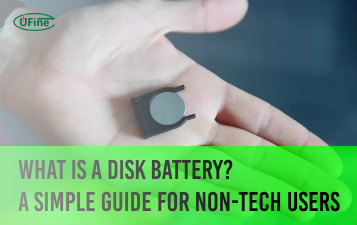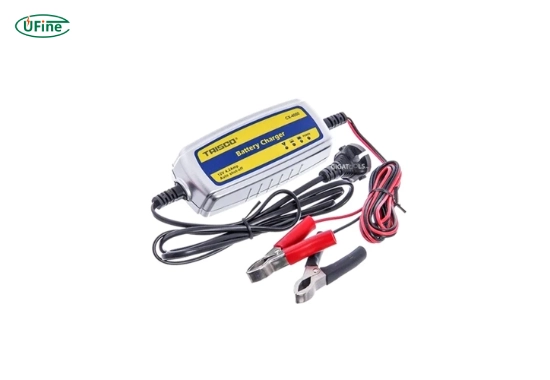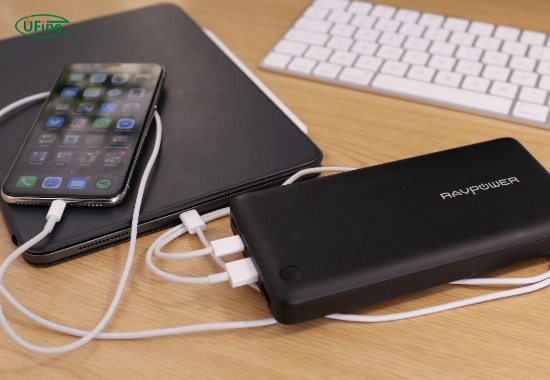In today’s world, keeping your devices charged is essential. Whether traveling, working, or outdoors, you need a reliable power source. Many people use the terms portable battery charger and power bank interchangeably, but they are different.
So, what exactly is the difference between a portable battery charger and a power bank?
The short answer:
A portable battery charger is any device that can charge another device’s battery while being portable. It includes power banks, solar chargers, and car battery chargers.
A power bank is a specific portable battery charger that stores energy in an internal battery and can recharge devices without a power source.
Now, let’s explore their differences in detail.
Part 1. What is a portable battery charger?
A portable battery charger is a general term for any portable charging device. It includes:
- Power banks: Small, rechargeable batteries for phones and tablets.
- Solar chargers: Use sunlight to generate electricity.
- Car battery chargers: Recharge car batteries or jump-start vehicles.
- Laptop battery packs: High-capacity chargers for laptops.
Key features of a portable battery charger:
- It can be powered in different ways (USB, solar, car battery, etc.).
- It may or may not have an internal battery (some need direct power).
- Designed for multiple devices, including phones, laptops, and cars.
- It can include wireless charging options for convenience.
Part 2. What is a power bank?
A power bank is a portable battery charger with an internal battery. It stores electrical energy and releases it when needed.
Key features of a power bank:
- It has a built-in rechargeable battery to store power.
- Comes in different capacities (measured in mAh or Wh).
- Uses USB or wireless charging to power devices.
- It is ideal for smartphones, tablets, and small electronics.
Part 3. How do portable battery chargers and power banks work?
Both portable battery chargers and power banks transfer stored energy to devices. However, they work differently:
- A power bank charges itself first, then stores energy in its battery. When you connect your phone, it transfers stored energy.
- A portable battery charger can store energy (like a power bank) or directly charge a device using an external power source (like a solar or car charger).
Part 4. Key differences between a portable battery charger and a power bank
There are four main differences between a portable battery charger and a power bank:
- Internal battery
A power bank always has an internal battery, while a portable charger may or may not. For example, a solar charger does not permanently store energy but provides power directly from the sun. - Power source
A power bank is charged first and then works without a power source. A portable battery charger can charge devices using solar energy, car batteries, or direct power outlets. - Capacity and use
Power banks usually have 5,000mAh to 50,000mAh capacity, suitable for phones and tablets. Some portable chargers, like car batteries, provide up to 1,000,000mAh for larger devices. - Best for different situations
Power banks are best for daily use and travel, while portable battery chargers are best for emergency or outdoor use.
Here’s a comparison table:
| Feature | Portable Battery Charger | Power Bank |
|---|---|---|
| Has an internal battery? | Some do, some don’t | Yes |
| Does it need a power source while charging devices? | Some do | No |
| Best for | Multiple charging solutions | On-the-go charging |
| Charging method | USB, solar, car, etc. | USB or wireless |
| Capacity range | 5,000mAh – 1,000,000mAh | 5,000mAh – 50,000mAh |
Part 5. Which one should you choose?
If you’re unsure whether to buy a portable battery charger or a power bank, consider these points:
- Choose a power bank if you need a simple, portable way to recharge your phone or tablet while traveling.
- Choose a portable battery charger if you need a more versatile option to charge more significant devices like laptops or car batteries.
Part 6. Types of portable battery chargers
There are different types of portable battery chargers, including:
- Power banks
The most common type is used for smartphones and tablets. - Solar chargers
Use sunlight to generate power, which is excellent for outdoor activities. - Car battery chargers
Larger chargers that can jump-start a car battery. - Laptop battery packs
Higher-capacity chargers designed for laptops.
Part 7. How to choose the best portable battery charger?
When buying a portable battery charger, consider:
- Capacity (mAh or Wh): Higher capacity means more charges.
- Charging speed and output (W or A): Affects how fast your device charges.
- Portability and weight: Lighter chargers are better for travel.
- Number of output ports: More ports mean charging multiple devices at once.
- Durability and build quality: Waterproof and rugged designs are helpful for outdoor use.
Part 8. Pros and cons of portable battery chargers and power banks
Portable battery charger pros and cons
- Pros:
- More Versatile
- Can charge larger devices
- Different power sources available
- Cons:
- Some need a direct power source
Power bank pros and cons
- Pros:
- Simple and portable
- No power source is needed while charging your device
- Ideal for travel
- Cons:
- Limited capacity
Part 9. Best portable battery chargers in 2025
Here are five of the best portable battery chargers in 2025:
- Anker PowerCore 26800mAh: A high-capacity power bank with fast charging for phones and tablets.
- Goal Zero Nomad 20: A solar charger with foldable panels for outdoor use.
- NOCO Boost Plus GB70: A car battery charger that can jump-start vehicles.
- RAVPower PD Pioneer 30,000mAh: A laptop power bank with USB-C fast charging.
- Jackery Explorer 300: A portable power station for camping and emergency use.
Part 10. FAQs about portable battery charger and power bank
What is the difference between a power bank and a portable battery charger?
A power bank is a portable battery charger with an internal battery. The term portable battery charger includes power banks, solar chargers, and car battery chargers.
Can I use a power bank while charging it?
Yes, most power banks support pass-through charging, allowing you to charge your phone while the power bank is charging. However, this may reduce efficiency.
How long does a power bank last?
A typical power bank lasts 2-3 years or around 300-500 charge cycles, depending on usage and battery quality.
Are power banks allowed on airplanes?
Yes, but most airlines have a limit of 100Wh per power bank. Always check airline regulations before traveling.
Can a power bank charge a laptop?
Yes, but only high-capacity power banks (usually above 20,000mAh) with USB-C PD (Power Delivery) can charge laptops.
Related Tags:
More Articles

What Is a Disk Battery? A Simple Guide for Non-Tech Users
A disk battery is a small, round cell used in watches, remotes, and other electronic devices. It delivers steady power for compact, low-drain devices.
What Battery Powers a Space Heater?
Discover the type of battery that powers space heaters and learn how to choose the right one for efficient heating in your home or office.
What Is an LR14 Battery? Learn About This C-Size Cell
The LR14 battery, also known as a C battery, delivers steady power. Learn its specs, uses, lifespan, and how it compares to other battery types.
Watch Battery Dimensions Chart: Sizes, Voltages, and Equivalents Explained
Understanding watch battery dimensions helps you choose the right size, voltage, and equivalent model to keep your watch running safely and smoothly.
How Long Can You Rely on Battery-Powered Generators?
Discover battery generator runtime & lifespan factors. Learn how to maximize performance and choose the right power solution.





